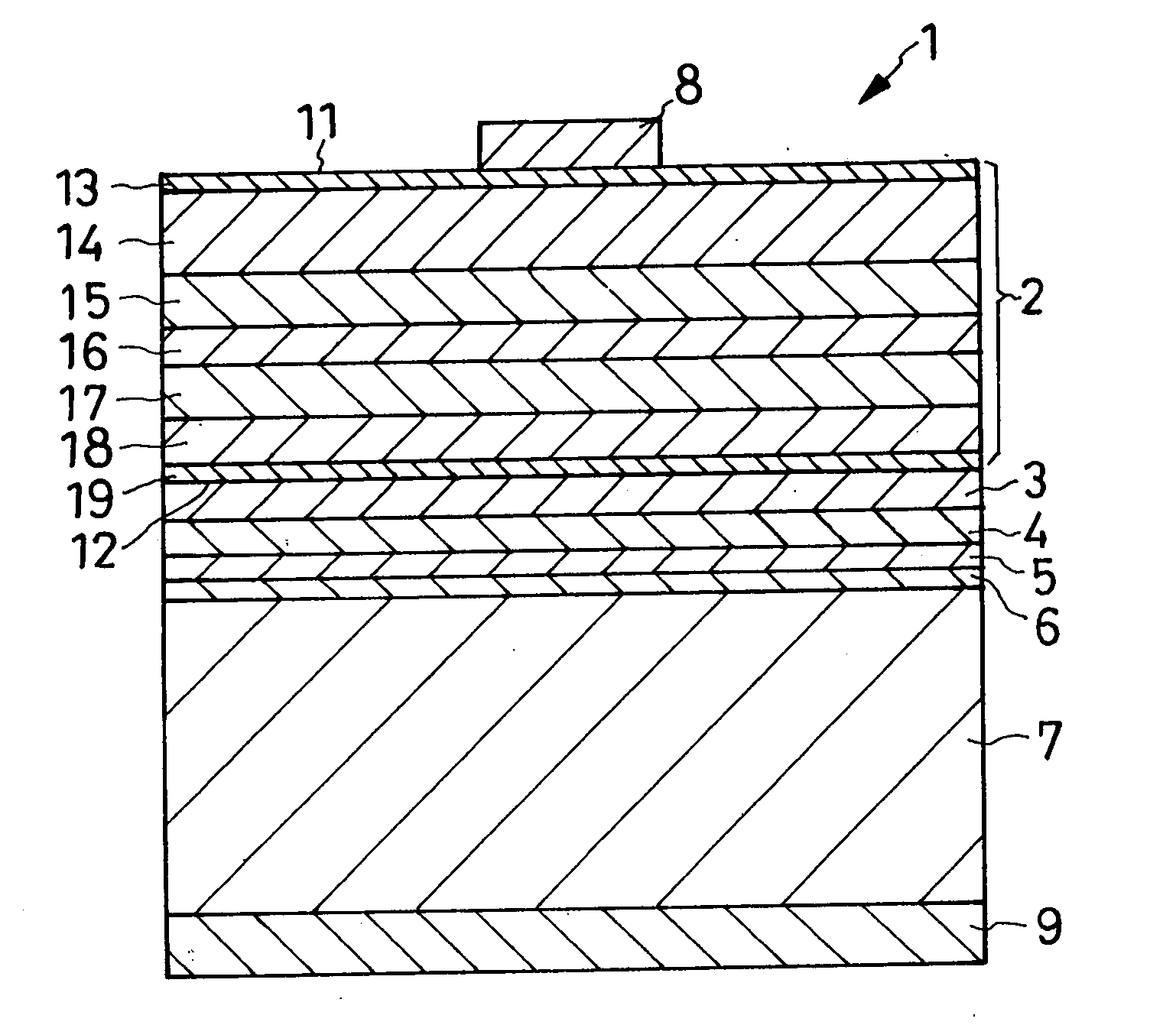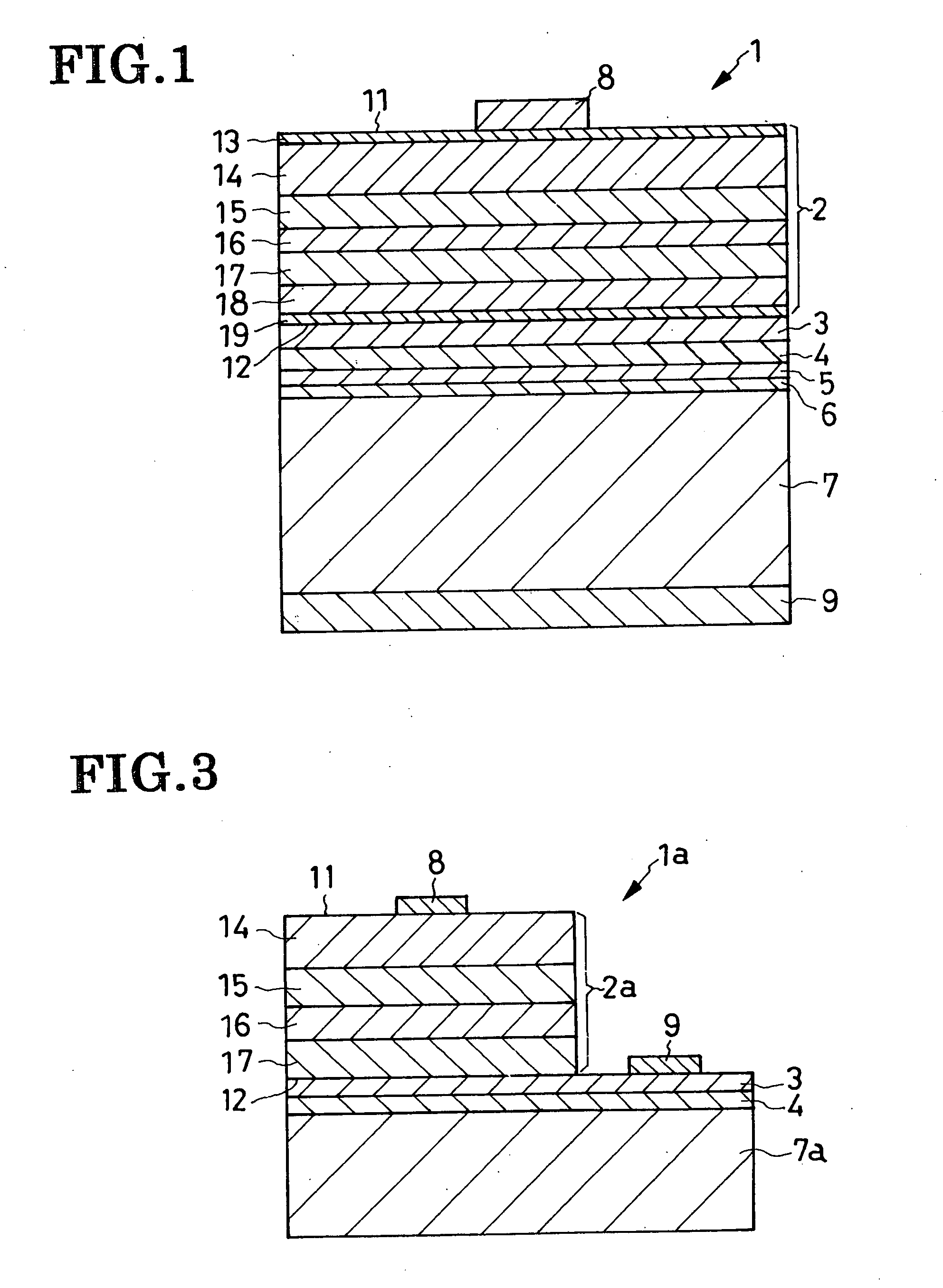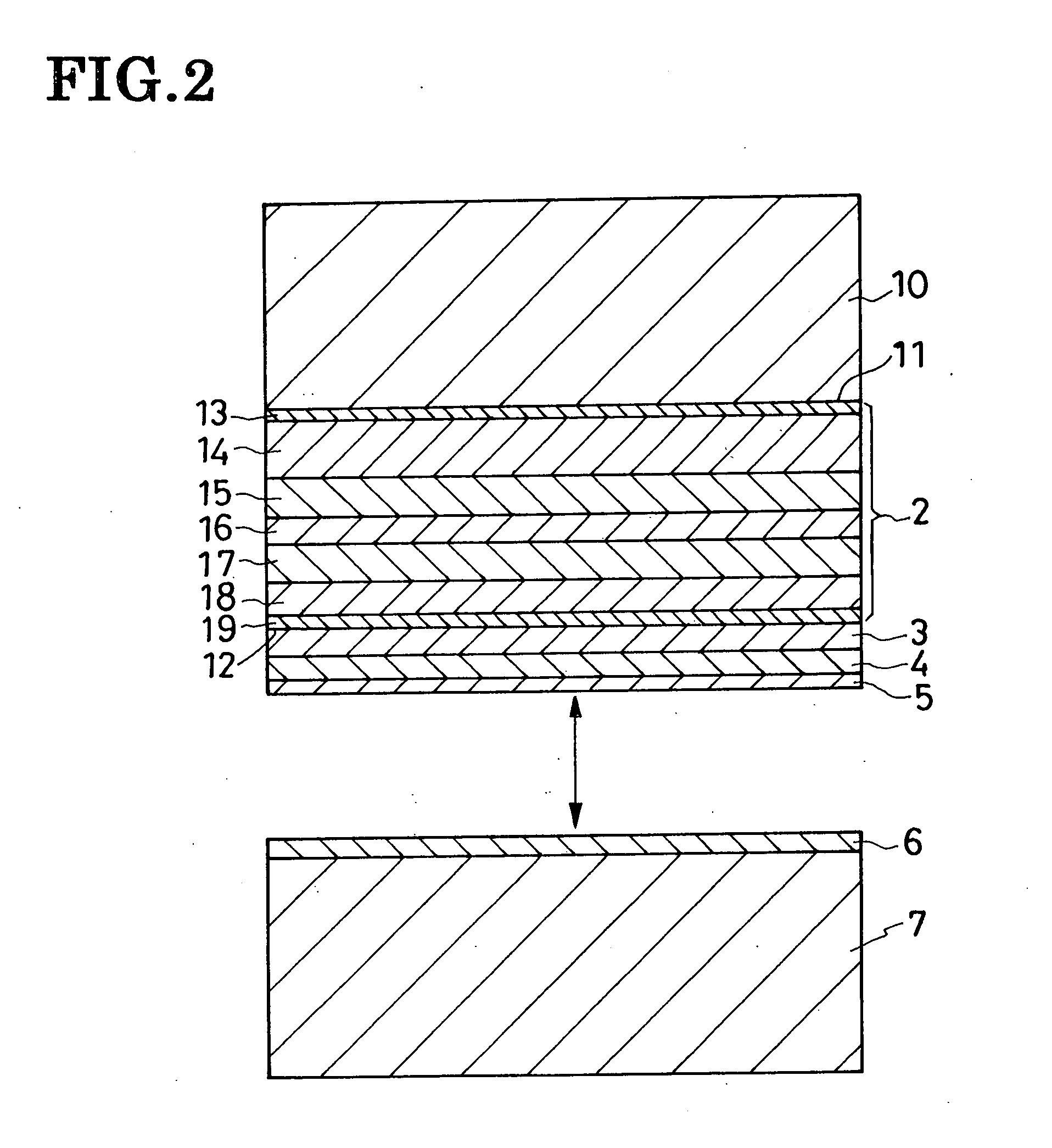Light-emitting semiconductor device and method of fabrication
a technology of light-emitting semiconductor and manufacturing method, which is applied in the direction of semiconductor/solid-state device manufacturing, semiconductor devices, electrical apparatus, etc., can solve the problems of high absorption of gaas substrate, inconvenient forward voltage between the anode and the cathode of the light-emitting device, and unsatisfactory remedy. , to achieve the effect of improving the efficiency of light-emitting semiconductor devices
- Summary
- Abstract
- Description
- Claims
- Application Information
AI Technical Summary
Benefits of technology
Problems solved by technology
Method used
Image
Examples
embodiment
of FIG. 3
[0064]FIG. 3 illustrates another preferred form of LED 1a according to the invention, which differs from the FIG. 1 device in having a modified semiconductor region 2a, modified baseplate 7a, and modified positioning of the anode 9. The modified semiconductor region 2a is akin to its FIG. 1 counterpart 2 except for the absence of the first and third complementary layers 13 and 18 and contact layer 19. The cathode 8 is therefore mounted on the surface 11 of the complementary layer 14, which may be more aptly termed the current spreading layer in this alternate embodiment of the invention.
[0065] The modified baseplate 7a and the transparent layer 3 and reflective layer 4 thereon have portions projecting laterally beyond the overlying semiconductor region 2a. The anode is arranged on the ledge or ledges thus formed by the baseplate 7a and layers 3 and 4, making direct contact with the transparent layer 3. The reflective layer 4 is coupled directly to the baseplate 7a. The bas...
PUM
 Login to View More
Login to View More Abstract
Description
Claims
Application Information
 Login to View More
Login to View More - R&D
- Intellectual Property
- Life Sciences
- Materials
- Tech Scout
- Unparalleled Data Quality
- Higher Quality Content
- 60% Fewer Hallucinations
Browse by: Latest US Patents, China's latest patents, Technical Efficacy Thesaurus, Application Domain, Technology Topic, Popular Technical Reports.
© 2025 PatSnap. All rights reserved.Legal|Privacy policy|Modern Slavery Act Transparency Statement|Sitemap|About US| Contact US: help@patsnap.com



